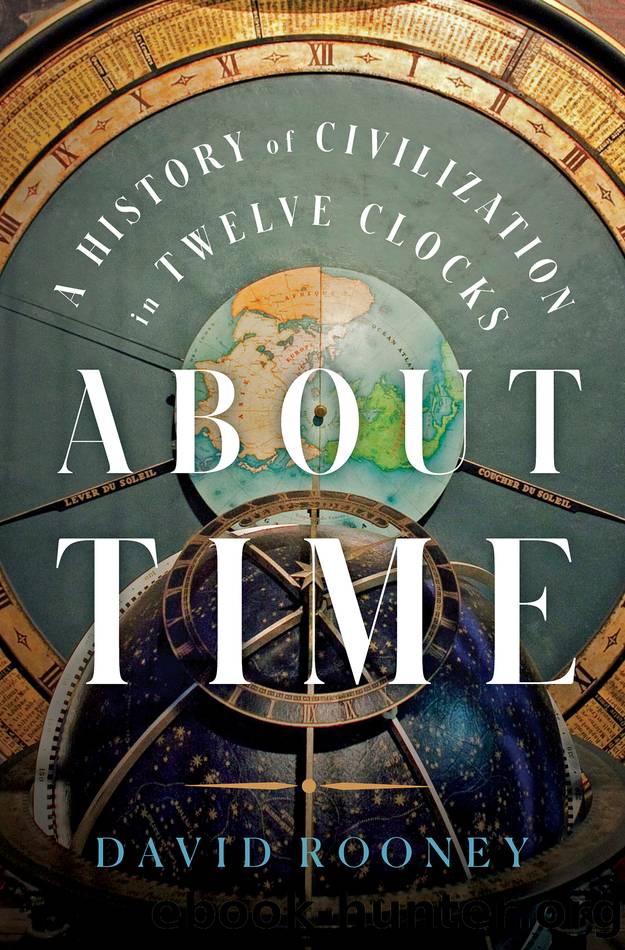About Time: A History of Civilization in Twelve Clocks by David Rooney

Author:David Rooney [Rooney, David]
Language: eng
Format: epub
Tags: history, civilization, World, science, Time, Technology & Engineering, Measurement
ISBN: 9780393867947
Google: rgIDEAAAQBAJ
Publisher: W. W. Norton & Company
Published: 2021-08-17T00:21:01.486523+00:00
IT WAS JUST after eight oâclock one morning in 1928 when Henry Ford knocked at the front door of Londonâs Science Museum, asking to be let in. The attendant on duty told him the museum did not open until midmorning, but when Ford informed him who he was, it did not take long for an urgent message to reach the museumâs keeper of engineering, Henry Dickinson, who promptly raced down, accompanied by other senior colleagues, to meet the famous American carmaker and industrialist.
Henry Dickinson might have been me, but for the passage of a few decades. During the fifteen years when I was a curatorâlatterly a keeperâin the Science Museumâs engineering collections, many was the time I would take a call from my colleagues on the front desk asking me to come and meet visitors who had arrived with questions about the artifacts in my care. It was never a chore. I have always loved discussing the history of technology with people who share my interests. It is all too easy for back-office staff in big museums to become disconnected from the people who really matterâthe public. Occasionally the timing could be inconvenient if I was in the middle of something or heading for one of the meetings that seem to be a constant feature of museum life. But I always came away with new knowledge and insights from these impromptu conversations.
I like to think that Henry Dickinson felt the same sense of anticipation as he walked a path I came to know so well, striding through the museumâs majestic East Hall, filled with steam engines from the eighteenth and nineteenth centuries by engineers such as Thomas Newcomen, Richard Trevithick and James Watt, before bounding up the stairs into the museumâs entrance hall to meet his visitor. Having ushered Ford through the doors that morning in 1928, Dickinson proceeded to tour the carmaker around the museumâs rich array of exhibits, doubtless asking more questions than he answered. Later, Ford was shown the museumâs engineering section, which includes such icons as Puffing Billy, the worldâs oldest surviving locomotive, and Robert Stephensonâs Rocket, which ran between Liverpool and Manchester on the worldâs first modern railway. Ford was overwhelmed by what he saw, and I am not surprised. I was, too, every time I had the pleasure of showing the museumâs visitors the very same exhibits.
The purpose of Fordâs visit in 1928 was to scout for engineering relics for a museum he was building at the Michigan town of Dearborn, and his ambitions were as expansive as his spending. Several times during his visit, Ford offered to buy the historic exhibits, including Rocket, only to be politely rebuffed by Science Museum staff.
But Ford was also building a historic village alongside his museum, with reconstructions of legendary American buildings such as Orville and Wilbur Wrightâs cycle shop, Henry J. Heinzâs family home and the courthouse in which Abraham Lincoln practiced as a lawyer. It opened to the public in 1933 and remains one of Americaâs most popular attractions.
Download
This site does not store any files on its server. We only index and link to content provided by other sites. Please contact the content providers to delete copyright contents if any and email us, we'll remove relevant links or contents immediately.
Machine Learning at Scale with H2O by Gregory Keys | David Whiting(4183)
Never by Ken Follett(3791)
Fairy Tale by Stephen King(3220)
Will by Will Smith(2793)
Fantastic Beasts and Where to Find Them: The Original Screenplay by J. K. Rowling(2465)
Can't Hurt Me: Master Your Mind and Defy the Odds - Clean Edition by David Goggins(2228)
It Starts With Us (It Ends with Us #2) by Colleen Hoover(2198)
The Storyteller by Dave Grohl(2172)
Friends, Lovers, and the Big Terrible Thing by Matthew Perry(2119)
The Becoming by Nora Roberts(2088)
Cloud Cuckoo Land by Anthony Doerr(2035)
New Morning Mercies: A Daily Gospel Devotional by Paul David Tripp(1877)
The Complete Witcher by Andrzej Sapkowski(1795)
HBR's 10 Must Reads 2022 by Harvard Business Review(1777)
Cytonic by Brandon Sanderson(1775)
A Short History of War by Jeremy Black(1762)
Go Tell the Bees That I Am Gone by Diana Gabaldon(1687)
Leviathan Falls (The Expanse Book 9) by James S. A. Corey(1651)
515945210 by Unknown(1599)
